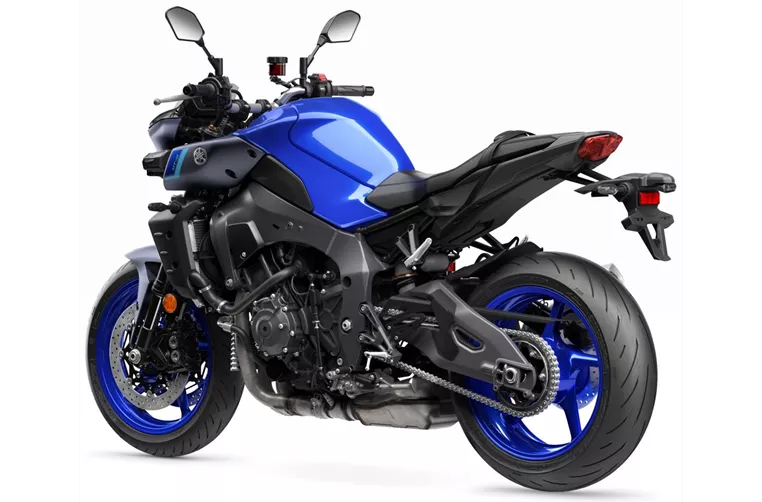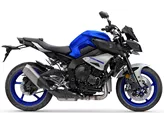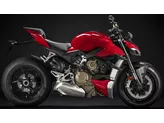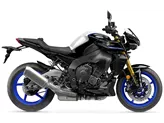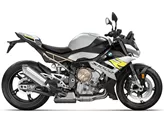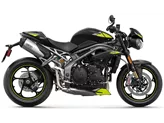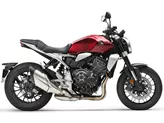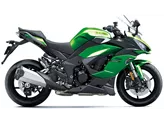Yamaha MT-10 SP 2017 vs. Yamaha MT-10 2022

Yamaha MT-10 SP 2017
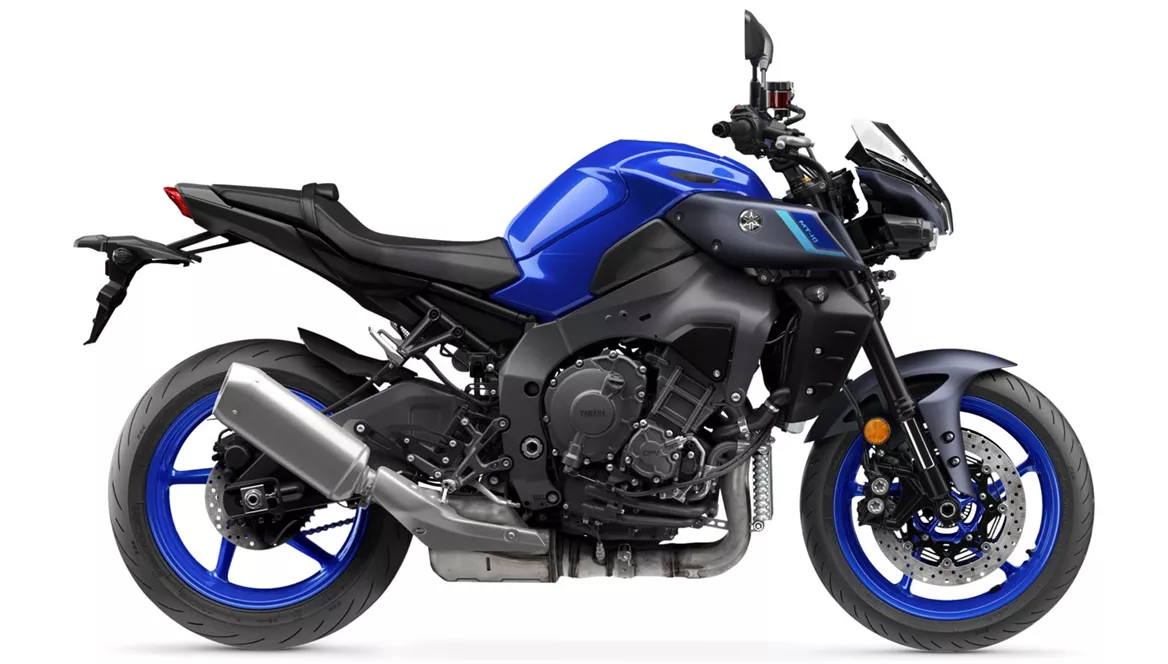
Yamaha MT-10 2022
Overview - Yamaha MT-10 SP 2017 vs Yamaha MT-10 2022
The Yamaha MT-10 SP model year 2017 and the Yamaha MT-10 model year 2022 are both naked bikes with similar technical specifications. However, there are some notable differences between the two models.
In terms of engine performance, the Yamaha MT-10 SP 2017 is equipped with an in-line, 4-cylinder engine that produces 160 horsepower and 111 Nm of torque. On the other hand, the Yamaha MT-10 2022 features the same engine configuration but with slightly higher power output, producing 166 horsepower and 112 Nm of torque. Both bikes have fuel injection systems and liquid cooling.
Both models have similar suspension setups, with upside-down telescopic forks at the front and swing arm suspension with a monoshock at the rear. However, there is a difference in the brand of the suspension components. The Yamaha MT-10 SP 2017 is equipped with Öhlins suspension, while the Yamaha MT-10 2022 features Kayaba suspension. Both suspensions offer adjustment options for compression, preload, and rebound. Additionally, the rear suspension of the Yamaha MT-10 SP 2017 is made of aluminum, which may contribute to improved performance and weight reduction.

Yamaha MT-10 SP 2017
In terms of chassis, both models feature aluminum frames with Deltabox construction, providing a lightweight and rigid structure for enhanced handling and stability.
Both bikes are equipped with double disk brakes at the front with a diameter of 320 mm, ensuring reliable stopping power. The Yamaha MT-10 2022 also features cornering ABS, which enhances safety during cornering maneuvers.
In terms of advanced rider assistance systems, both models are equipped with ABS, riding modes, and traction control. However, the Yamaha MT-10 2022 offers additional features such as ride-by-wire, a shift assistant with blipper, cruise control, anti-wheelie, and an extended electronics package. These additional features provide enhanced performance, convenience, and safety.
Both models have similar dimensions and weights, with a wheelbase of around 1400-1405 mm, seat heights of 825-835 mm, and a kerb weight of approximately 210-212 kg. They also have the same fuel tank capacity of 17 liters.
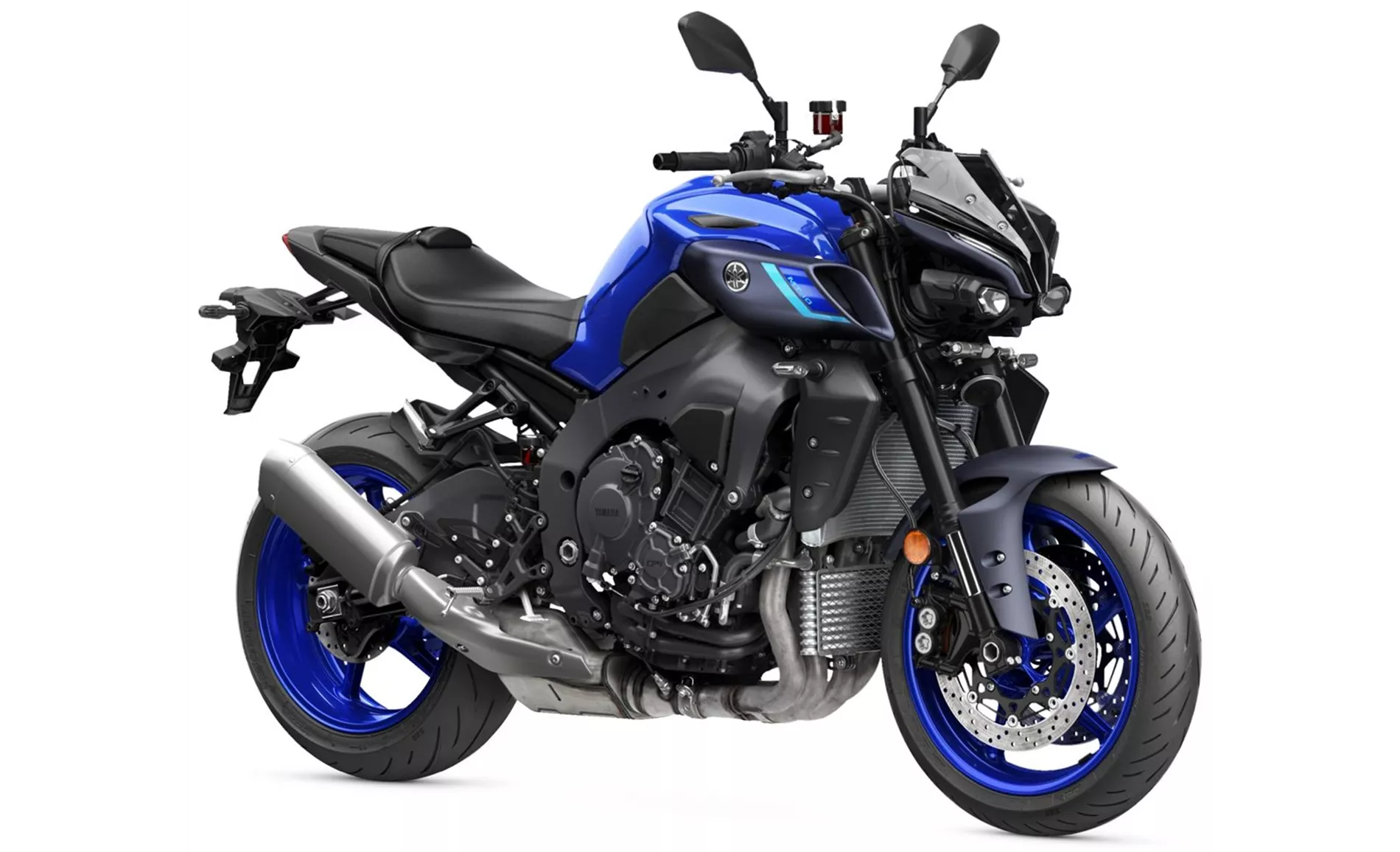
Yamaha MT-10 2022
In terms of strengths, the Yamaha MT-10 SP 2017 is praised for its great chassis, high ride comfort/utility comfort due to the electronic chassis, emotional yet refined engine, pleasant wind protection, and a balanced overall package despite its radical looks and wicked sound. On the other hand, the Yamaha MT-10 2022 is commended for its lovely CP4 engine, great electronics package, distinctive look, comfortable seating position, easy-to-read gauges, and cornering ABS.
As for weaknesses, the Yamaha MT-10 SP 2017 is criticized for its traction control not being up to the level of the Aprilia and its somewhat inactive seating position on the racetrack. The Yamaha MT-10 2022, on the other hand, has a non-adjustable clutch lever, lacks steel braided brake hoses, and has a somewhat small display.
In conclusion, while both the Yamaha MT-10 SP 2017 and the Yamaha MT-10 2022 are powerful and capable naked bikes, the 2022 model offers some improvements in terms of engine power, advanced rider assistance systems, and additional features. However, the 2017 model still holds its own with its great chassis, comfortable ride, and overall balanced package. Ultimately, the choice between the two models will depend on individual preferences and priorities.
Technical Specifications Yamaha MT-10 SP 2017 compared to Yamaha MT-10 2022
Pros and Cons in comparison
Pros and Cons in comparison
Yamaha MT-10 SP 2017

With the SP version, the MT-10 becomes cooler, more desirable and, thanks to the high-quality chassis, better. The semi-active suspension from the R1M is the best in the naked bike league. Highest quality and best function in combination. The chassis also excites on the racetrack. Nevertheless, the MT-10SP is not a racing machine, because the seating position is not active enough for that.
Yamaha MT-10 2022
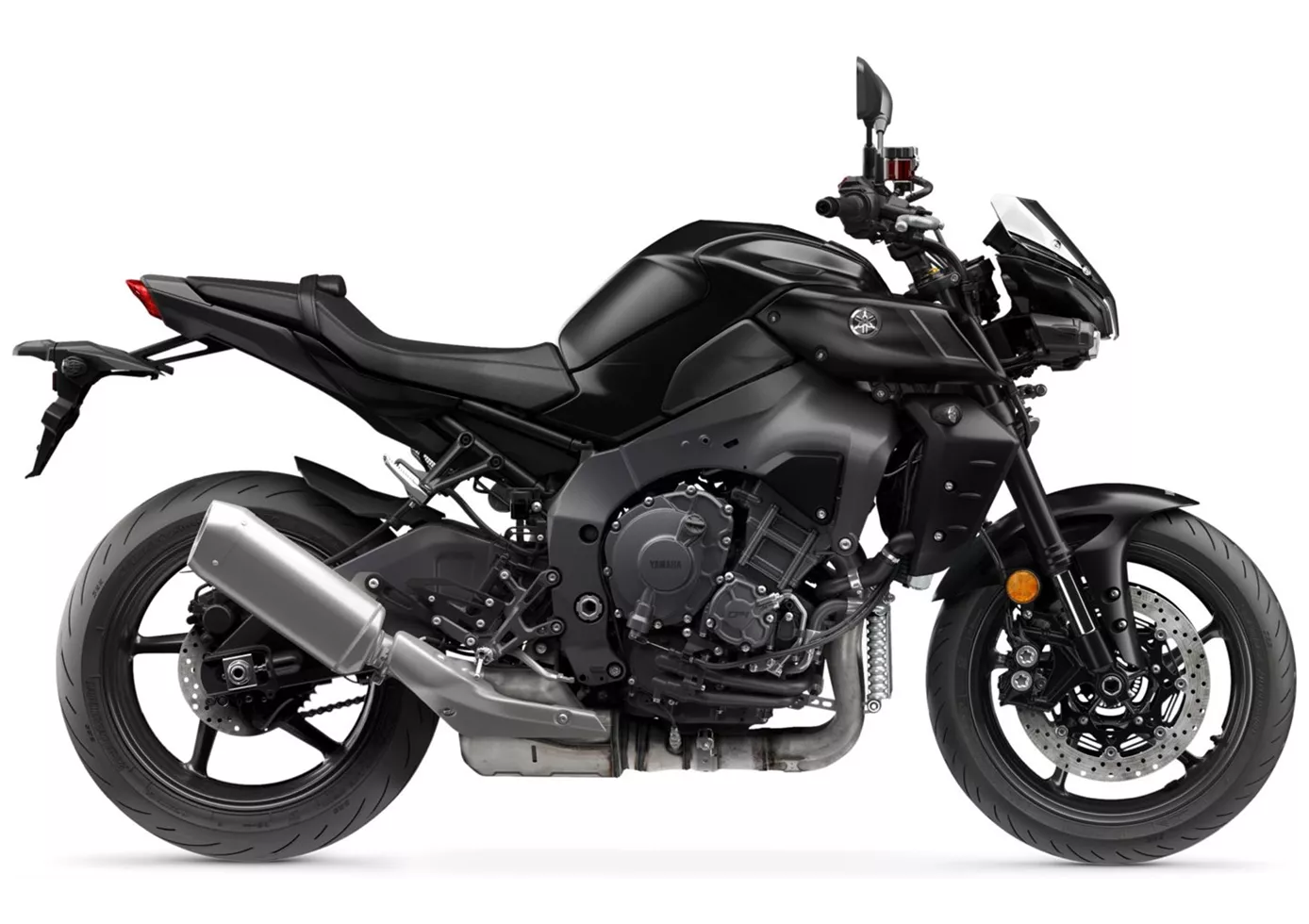
The new MT-10 is a really successful evolution of its predecessor, but remains completely true to its character. The new electronics package with a 6-axis IMU is a blast, all features are so well coordinated and work so well together that the rider is optimally supported by the electronics in every situation without being overbearingly patronised. The rest of the components in the chassis and brakes are completely in order and the Mad Max-Brachialo style look has been toned down a little in direct comparison to the predecessor, but still remains unique and clearly recognisable as an MT-10.
Price Comparison Avarage Market Price Yamaha MT-10 SP vs Yamaha MT-10
There are a few key differences between a Yamaha MT-10 SP 2017 and a Yamaha MT-10 2022. In terms of price, the actual average price of a Yamaha MT-10 2022 is about 14% higher. A Yamaha MT-10 SP 2017 experiences a loss of 2,320 USD in one year of ownership. This is offset by a loss of 440 USD for a Yamaha MT-10 2022. Compared to Yamaha MT-10 2022 there are less Yamaha MT-10 SP 2017 bikes available on the 1000PS.de Marketplace, specifically 4 compared to 76. It takes less time to sell a Yamaha MT-10 SP with 123 days compared to 151 days for a Yamaha MT-10. Since model year 2017 1000PS.de editors have written 18 reviews for the Yamaha MT-10 SP and 32 reviews for the Yamaha MT-10 since model year 2016. The first review for the Yamaha MT-10 SP was published on 10/4/2016 and now has more than 28,600 views. This compares to more than 20,700 views for the first review on Yamaha MT-10 published on 11/17/2015.

